This winter, say no to buying, selling, and eating Nassau grouper. Let’s give these fellas some time for romance!
It’s that time of year again… Nassau grouper are having sex.
That’s right. In the name of courtship and mating , Nassau grouper are aggregating in large schools of hundreds to thousands of fish to get their freak on throughout the Caribbean and The Bahamas. These massive gatherings, called Fish Spawning Aggregations (FSAs), happen off predictable deep-water areas every year, typically around the winter full moons.
Migrating to FSAs ¬where these otherwise solitary fish gather in large numbers to replenish their population numbers ¬is no easy feat for these iconic brown-and-white-striped fish. Indeed, many Nassau groupers travel more than 100 miles from their home reefs to be in the right place, at the right time, to make babies. Oh, the things we do for love.
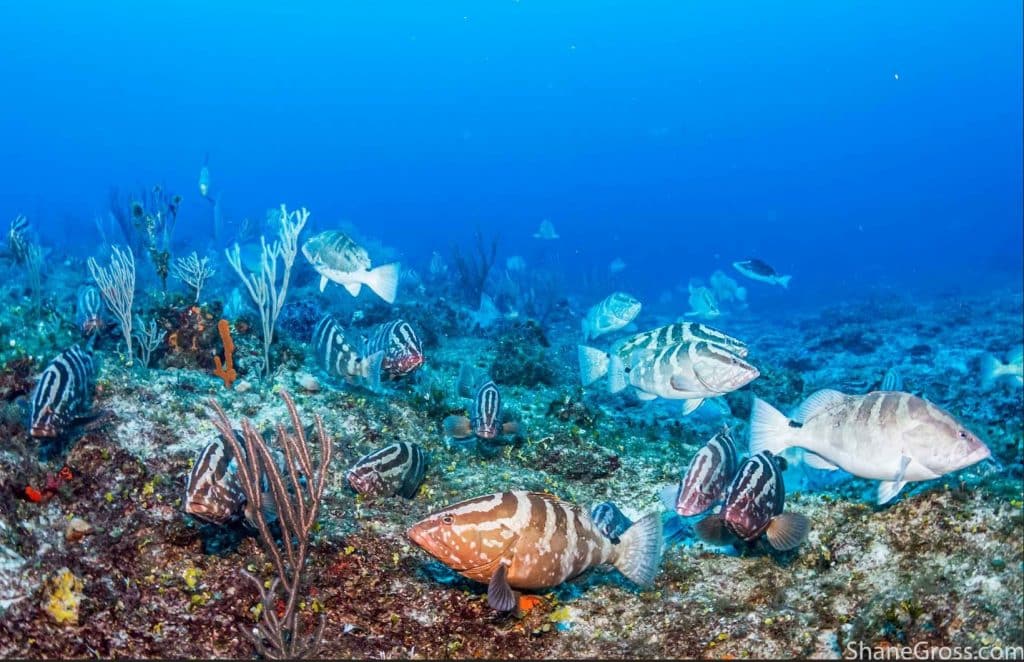
What happens at a FSA?
Spawning aggregations are undoubtedly one of nature’s rarest and most awe-inspiring extravaganzas. Like a colourful dance, the groupers first transition between three colour phases – bicolour, white belly, and dark. These colour shifts intensify in the afternoon and are thought to convey physiological readiness and willingness to spawn.
As sunset approaches, smaller groups break away from the main spectacle and swim higher up the water column. There, the females release eggs and at the same time, the males release sperm. This synchronistic event is incredible to see and optimizes the chances of fertilization!
Afterwards, the smaller groups descend to re-join the spawning party below. All in all, the rendezvous is a relatively short-lived affair; groupers typically begin their homeward migrations after spending just a few days within the FSA.
The reason for “Closed Season:” FSAs and overfishing
Nassau grouper are easy targets for overfishing because FSAs happen at predictable times and places and are the only time of the year when these fish reproduce. Fishing at spawning sites (via traps, or hook and line) can rapidly deplete population numbers, and ultimately lead to fishery collapse.
In fact, the Nassau grouper was listed as “Critically Endangered” on the IUCN Red List in 2018, largely because of this unsustainable fishing practice. Joining the ranks of other critically endangered species including rhinos, gorillas, tigers, and pandas, ¬the Nassau grouper is at Sadly, Nassau grouper fisheries have already collapsed in several locations, including Jamaica, Bermuda, Mexico, Belize and the USA. Nassau grouper populations in The Bahamas are also facing extinction, having declined by up to 60% over the last three decades. Some breeding sites have already been wiped out. Cat Cay, for example, was one of the first FSAs reported in The Bahamas. Historic records show an estimated 30,000 to 100,000 Nassau grouper aggregated at that site in 1971. Today, the Cat Cay FSA no longer exists.
Seasonal closures protect spawning adults during this critical phase of their life cycle. This is why the Nassau Grouper “Closed Season” takes place from Dec. 1 to Feb. 28 in The Bahamas every year. Not only does the “Closed Season” make it illegal to buy, sell, or fish Nassau grouper during the spawning season, it ensures Bahamians can eat their cultural favourites ¬including stew/boil fish and Johnny Cake ¬for years to come!
What’s next?
Dive deeper.
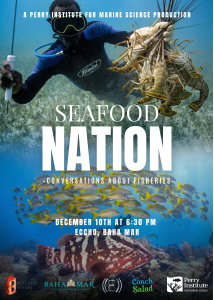
“Seafood Nation” Documentary Premiere Explores the Heart of Bahamian Culture and the Future of Fisheries
NASSAU, The Bahamas | December 5, 2025 – From the bustling stalls of Potter’s Cay to family kitchen tables across the archipelago, seafood is far more than just sustenance in
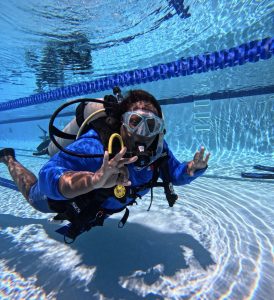
PIMS and Disney Conservation Fund Partner to Train 19 Government Divers
PIMS dive training in Nassau strengthened national coral restoration capacity across government agencies. Bahamas Dive Training Builds National Coral Restoration Capacity Last fall, between the months of September and October,
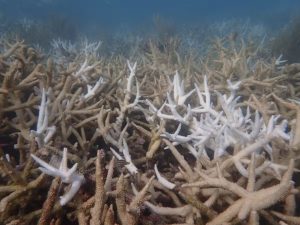
Florida’s Coral Reef Crossed a Line: What Functional Extinction Really Means for Elkhorn and Staghorn Corals
Reefs didn’t just bleach. They functionally vanished in one summer. A new Science study co-authored by researchers from the Perry Institute for Marine Science (PIMS) has found that Florida’s two
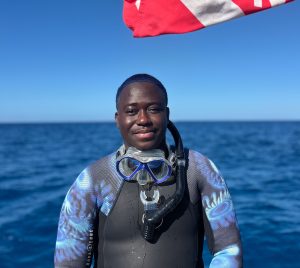
Q&A: Understanding the IDC Course at PIMS with Duran Mitchell
A former aquarist turned coral conservationist, Duran is passionate about understanding how all marine life connects. PIMS & IDC: Empowering New Dive Instructors for Marine Conservation PIMS & IDC: Empowering
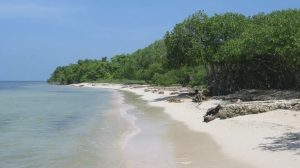
Forbes Shines a Spotlight on Coral Reef Restoration in the Caribbean
When Forbes highlights coral reef restoration, it signals something powerful: the world is paying attention to the urgent fight to protect reefs. And solutions are within reach. Recently, Forbes featured Dr. Valeria
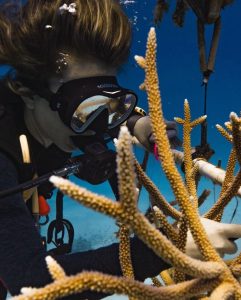
New Reef Rescue Diver Course: Volunteer in Coral Reef Restoration Abroad
Coral reefs are often called the rainforests of the sea—complex ecosystems that shelter a quarter of all marine life, feed millions of people, protect coastlines from storms, and attract travelers



